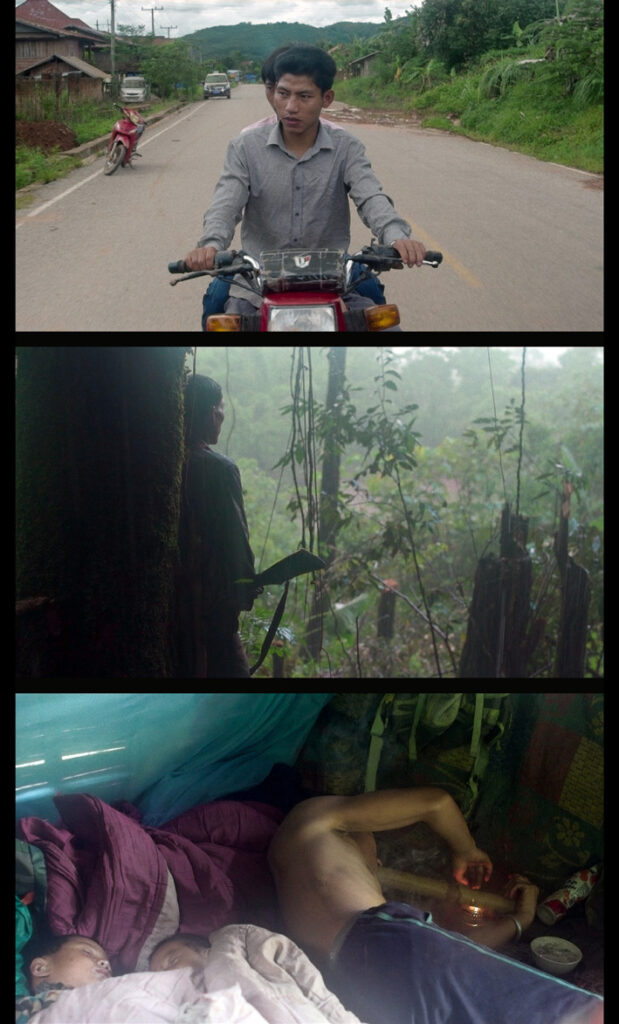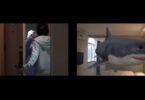Warning: exposure to film festivals at an impressionable age may lead to a chronic weakness for obscure films of irregular length with little or no narrative cohesion. I speak from personal experience.
My problem began in the last century back in the Midwest with a festival that would solicit entries via artfully printed brochures sent out, if you can imagine, in the mail. Most but not all of the respondents were students or teaching artists at college art departments across the U.S. and Canada, and the operative term to describe their work was, “experimental.” To enter, one’s film had to be 16mm and to “evidence a high regard for film as a creative medium.” The festival promised to screen every film in its entirety and to program as many as time would allow. Thus, in long hours of viewing through weeks of wintery nights, an addiction incubated.

Full disclosure: I am still at it. But, honestly, it’s not like it used to be. And I swear, like everything else, I’ve changed!
While a few hundred 16mm films used to seem like a lot, a film festival now can receive thousands of entries electronically. Instead of ten people watching films together in a dark and chilly room, screening is done by many individuals at home with their laptops. Digital technology has made filmmaking more like writing, a medium for which the tools are commonly available. It can seem seductively easy. Experimental is still used as a word to define a kind of category, and filmmakers are fond of applying it to their work. But in truth, most new filmic experiments are uncannily similar to the old ones of long ago leaving the current experimental works representing something more like a genre reflecting a style that was experimental once, when new. In short, the old “underground cinema” of the last century has grown up and become something like the poetic subconscious of mainstream motion picture storytelling.
But where, you might ask, are all these film poems, these paintings that have motion and sound? Well, like one’s own subconscious, they can be hard to find. I had mentally earmarked three documentaries for this article, works I had seen in the last year, but was shocked to find that only one was accessible. A truly fascinating film, about the trade in fighting crickets in China, has simply disappeared along with any trace of its filmmaker. This film was so wonderfully bizarre, at once informative and beautiful, that I took pictures of it with my cell phone — images that I long to share with you but, of course, may not without the filmmaker’s permission. If you should get wind of Noah Zhang (Zhang Meng Zhou) or his film, “One in a Million,” among the “million” films by the same name, you’re on to something I assure you.
Another, by Indian filmmaker, Alex Xavier, is pure observational cinema shot over a few years on his cell phone. The film’s focus is a little neighbor kid who comes regularly to Xavier’s parents’ house in Cochin, India. Sound prosaic? It is. But Xavier’s camera work has a natural compositional sense that can be mesmeric. When I saw the film, Xavier was calling it a work in progress. He still is, but you can get a taste of it by visiting the filmmaker’s website: www.alexxavier.me.
So, getting back to addictions, the one film of these three that can be tracked down and seen is “Century of Smoke,” a brilliant documentary by Belgian filmmaker, Nicolas Graux. This film takes the viewer to the hinterlands of Laos near the Chinese border. Through Graux’s stately, patient and well composed camera work comes an intimate look at a tiny village nestled in dense forest and surrounded by the interplay of mountains, mist and clouds. The village is a world of wood planks, corrugated roofing, rain, mist, jungle, mud, children, chickens, men, women, the smoke of cooking fires…and the smoke of opium, by which the village both lives and dies seemingly at the same time. When we conjure Hell, isn’t it most often a pretty nice place where there is just one thing that is very wrong? Here the village’s cash crop is opium, but half the village is addicted to it, mostly the men who languish while their women clear the fields, care for the young, cook, clean up around the place and dream aloud of walking away some day.

It is a dark subject beautifully rendered. A story told through visual observation over a rich palette of ambiant sound and the stark eloquence of its subjects — Akha with English subtitles. One woman declares her heart strong enough to douse her husband in gasoline and burn him. You don’t hear that every day.
Find Nicolas Graux at: derives.be/en/films/century-of-smoke





Leave a Comment